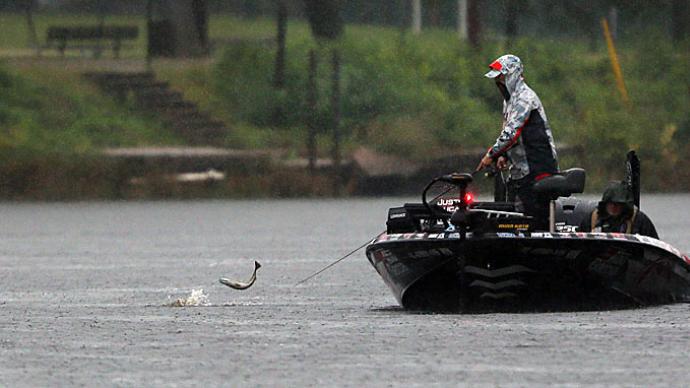
Along with rain comes muddy water. The colder the water, the longer the silt stays in suspension. This means that almost everyone will be forced to fish in muddy water this spring. As a fisherman who usually goes out of his way to find clear water, I will put up with the muddy water for the benefit of just having the water. This benefit forces us all to try to catch muddy-water fish. As it turns out, we're lucky because the muddy water bothers fishermen much worse than the fish.
It is proven that bass see up to six times better than we do. Their sense of smell is 600 times more sensitive than ours, and they can sense minute vibrations up to 25 feet away. Whether they can see or not has a limited effect on their ability to eat and survive their normal daily patterns.
When I think about muddy water, I am reminded of a story a good friend tells about a tournament he fished on Waurika Lake in south Oklahoma. He said he did not get to see or pre-fish the lake, but his partner did. He showed up at the lake an hour before it started getting light. His partner pitched him a 1/2-ounce firetiger spinnerbait with a chartreuse single Colorado blade as big as a half-dollar and said, "Tie this on and put all your other rods in the rod box because you are not going to need them." So they left for their fishing hole, still in the dark. My friend said when it finally got daylight, you couldn't tell where the red dirt started, and the red dirty water quit. He was devastated and told his partner there couldn't be any fish because the water looked like chocolate gravy.
His partner told him to shut up and fish. When the day was over, they had over 20 pounds of fish in the box and had culled all day. He said they never left a hundred-yard area where an old tank dam had been. The key had been the big thumping blade and bright colors of the skirt. The old tank dam had come up to within two feet of the surface and had some old laydown timber. If cold wind or falling water temperature doesn't prohibit it, fish will almost always go shallow in muddy water. The water on top of the tank dam had been where the fish were "supposed" to be.
They say the brain of a double-digit size bass is only as large as a lima bean. They instinctively do what evolution has taught them to do. I do not mean to imply they are stupid. They just don't have the power of reasoning.
Okay, we have established where the nature of the bass tells it to be. Now we've got to align our thinking to what it will take to catch it.
I believe the fish move shallow because they don't have to deal with the bright sunlight there, and the silt tends to settle out of the shallow water first. They can see farther in muddy water than we can, but they don't have to see the prey to bite it. Their sense of smell and ability to feel vibrations through their lateral line puts them in the immediate area, so they know where the bait is. If it's big or bright and they can see it, that only increases your odds.
There are a ton of lures designed to be fished in muddy water. The magic is our lures must appeal to enough of the fish's senses to cause the bite. I lean toward a crankbait in a fluorescent color, firetiger, or chartreuse.
I like crankbaits with a good vibration and an excellent rattle chamber. A model that dives five to eight feet and is available in all the bright colors needed in stained or muddy water fits the bill.
A 1/2-ounce spinnerbait will also get the attention of muddy-water bass. Use one with a single turtle-back blade and some chrome strips to add flash to the skirts. These can be deadly in off-colored water when teamed with a bright chartreuse trailer. But, again, you are appealing to two of the primary senses, and if you apply your favorite scent, maybe three.
The third lure I want to mention is a jig. One with a stand-up profile is perfect when teamed up with a floating craw trailer. I like ones with an extra loud rattle for muddy water. Again, with your favorite scent, you appeal to three of the fish's basic senses. Their black and blue jigs are the secret weapons of winners.
During light or medium run-off times, especially in the summer, the muddy layer may only be in the top eight to 10 inches of water. This situation is evident as you can look behind the boat and see a trail of mixed water, from muddy to clear. In this case, all the off-colored upper layer is defusing the light that can enter the water. Or, simply put, there's little or no light penetration. This usually calls for dark-colored plastics. A black 10-inch worm, dark pumpkin, or even a dark brown offering will work. However, I have found that in totally saturated, muddy water, plastics don't excite enough of the senses necessary to catch fish.
Fishing in muddy water is kind of like fishing heavy timber. You have to ignore the timber and fish the structure. In muddy water, you have to ignore the water color and use something that appeals to as many of the primary senses of the bass as you can to be successful.
Until next time, smooth water and create your own luck.




